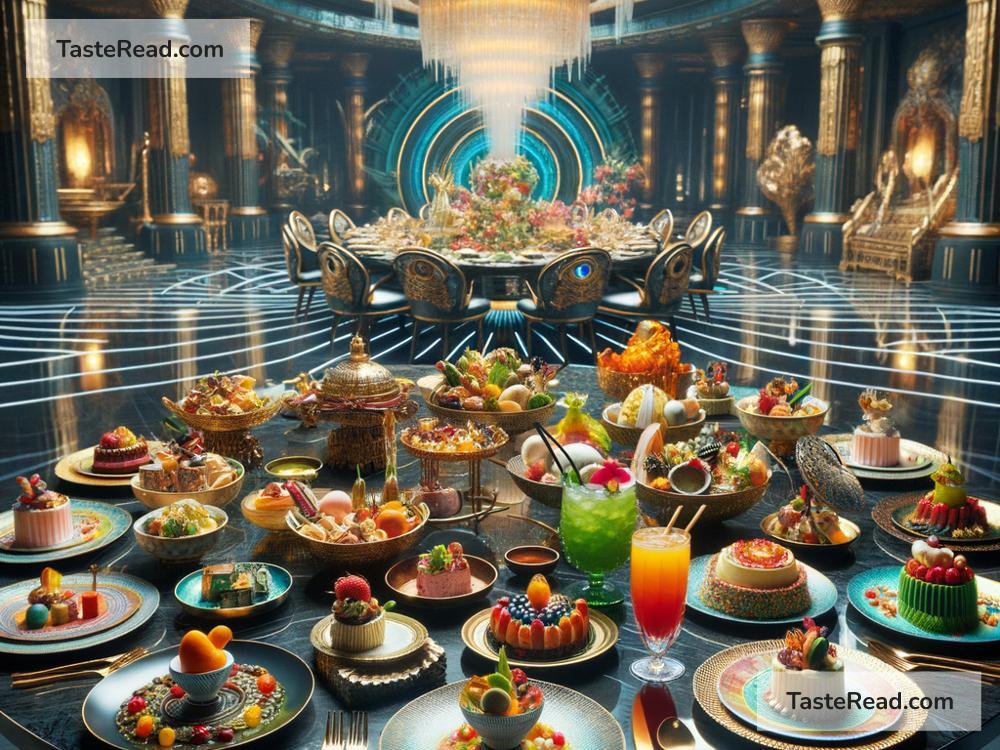Exploring the Capitol’s Extravagant Feasts in The Hunger Games
In The Hunger Games series by Suzanne Collins, the Capitol represents extravagance, excess, and privilege. While the districts struggle to survive, the citizens of the Capitol live in luxury, indulging in fashion, entertainment, and extravagant feasts. Food plays a significant role in showing the contrast between the Capitol’s wealth and the districts’ poverty. Through the feasts seen in the series, we learn a lot about the Capitol’s culture, values, and ignorance.
A World of Opposites
The Hunger Games universe is divided into 12 districts and the Capitol. The districts are forced to supply goods to the Capitol, leaving their own people hungry and overworked. Each district specializes in producing something, from agriculture to technology, but most of what they make goes to the Capitol. In the districts, many families live without enough food, struggling to find even basic meals like bread. Katniss Everdeen, the heroine of the story, knows what it feels like to starve and hunts animals like squirrels to feed her family.
On the other hand, the Capitol is completely opposite. Nobody there seems to worry about hunger or survival. Instead, people focus on pleasures, appearances, and entertainment. Their feasts are a perfect example of this excess. When Katniss visits the Capitol for the Hunger Games, she is introduced to foods that she never dreamed of eating growing up in District 12. At these feasts, the Capitol people eat without limits, treating food as a form of art and entertainment.
Food as a Symbol of Wealth
In the Capitol, food isn’t just something to eat—it’s an experience. Lavish spreads of colorful, richly flavored dishes fill banquet tables. The citizens of the Capitol consume foods that look like they belong in a dream, such as lamb stew with dried plums (a favorite dish of Katniss) or strange creations such as pink soup made from fish. There are cakes, fruits, and drinks with vibrant colors, and the food is presented in ways that make it almost too beautiful to touch.
One shocking detail about the Capitol’s feasts is the availability of artificial methods to continue eating even after being full. Capitol citizens use a special drink to make themselves vomit, just so they can eat more during their parties. This behavior highlights their excessive lifestyle and disregard for the struggles of others.
How Katniss Reacts to Capitol Feasts
Katniss, who grew up in the poorest district, District 12, is overwhelmed by the Capitol’s indulgences. She is used to hunting for food and rationing her meals carefully. As a tribute in the Hunger Games, she is treated to rich food and feasts. At first, she enjoys the meals, especially when experiencing flavors and textures she never had access to before. However, she soon realizes how unfair it is that the Capitol has so much while the districts starve.
Katniss feels guilty knowing that back home, people in her district are struggling to eat while the Capitol wastes food. She also notices how little the Capitol people truly understand hunger. They view food as entertainment, not as survival. This ignorance is frustrating because the Capitol could feed entire districts with just a fraction of what they waste. For Katniss, these extravagant feasts don’t just represent luxury—they symbolize the Capitol’s cruelty and indifference to human suffering.
The Power of Food in the Story
Food is more than just survival in The Hunger Games. It represents power and control. The Capitol’s ability to feast endlessly while withholding food from the districts serves as a reminder of their dominance. By keeping the districts starving, the Capitol ensures they remain weak and dependent.
For Katniss, food also becomes a form of rebellion. Her hunting skills are a way to provide for her family despite the Capitol’s restrictions. Sharing food, like the bread Peeta offers her as a child or the iconic mockingjay berries later in the story, becomes a way to form bonds and challenge the Capitol’s rule.
Lessons from the Capitol’s Feasts
The Capitol’s feasts are not just a detail in the story—they serve a purpose. Readers see the inequality between the districts and the Capitol. While one group suffers, the other wastes without care. This helps highlight the themes of privilege, power, and control in The Hunger Games.
As readers, we might reflect on how food is treated in our own world. Are there places where some people have far too much while others have too little? The Capitol’s feasts remind us of the importance of fairness and compassion. They also show how excess can lead to ignorance when people stop appreciating what they have and ignore the needs of others.
Conclusion
The extravagant feasts in the Capitol are eye-opening moments in The Hunger Games. They are colorful, delicious, and full of wonder, but they also reveal the Capitol’s disregard for the struggles of the districts. For Katniss, the feasts are both a tempting escape and a harsh reminder of inequality.
Through these feasts, Suzanne Collins gives readers a clear picture of the Capitol’s privilege and wastefulness. They make us think about themes like survival, justice, and empathy. The story asks us to consider the value of food—not just as nourishment, but as something that connects us to one another and reminds us of the importance of fairness in society.


